- The 0x80070570 Windows error code can appear due to various causes, depending on which you can use different methods to resolve it.
- You can run the check disk utility, change BIOS configuration, re-download the Windows ISO, change the installation directory, etc.
- Other solutions include running DISM and SFC scans, formatting your hard drive, updating drivers, and performing a system restore.
Fix 1: Run the Windows Check Disk utility
You can run into the 0x80070570 error while installing or reinstalling Windows. In such a situation, you should first try running the CHKDSK utility.
- Boot from the Windows installation disk you are using to install or reinstall the OS.
- Click on the 'Repair your computer' option and then on 'Troubleshoot' in the Windows Recovery environment.
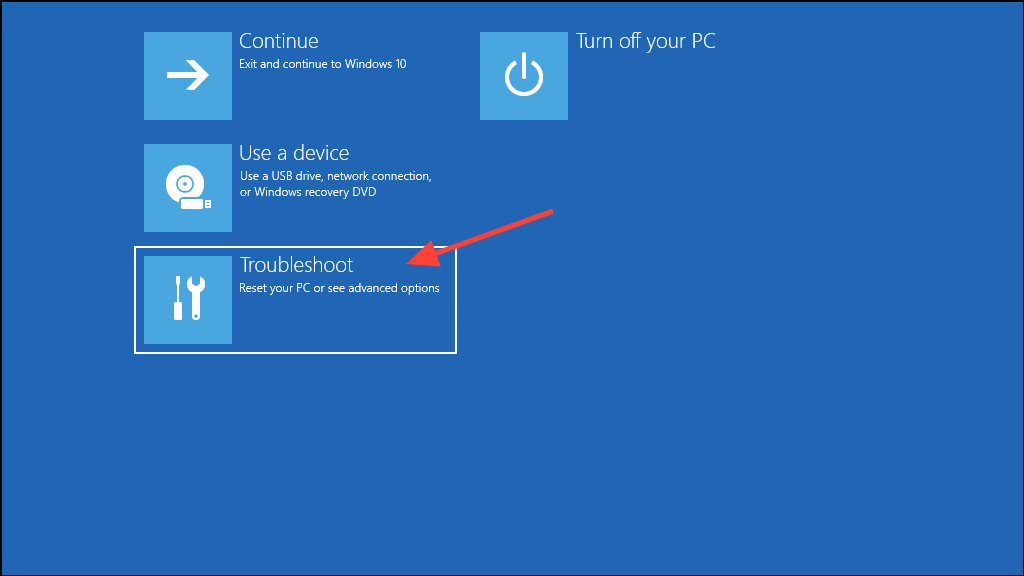
- On the Troubleshoot page, click on 'Advanced Options' and then on 'Command Prompt'.
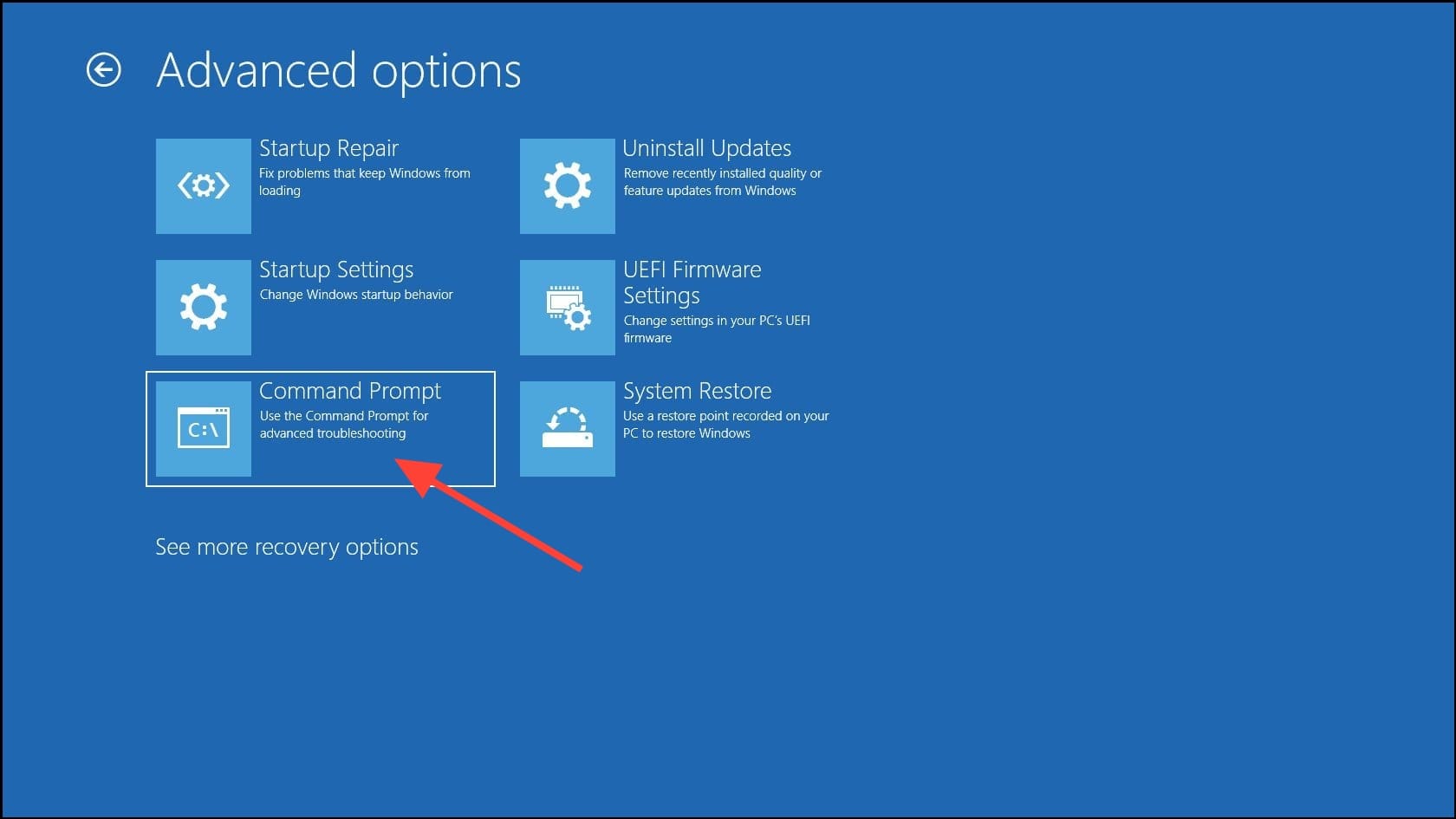
- When the command prompt window opens up, type
chkdsk F: /f /r. Replace 'F' with the drive letter where you want to install Windows and press 'Enter'.

- When the disk check is completed, Windows will ask you whether you want to reboot your PC. Press
Yto do so. Then try installing Windows again.
Alternative Method
If you can log in to Windows, you can also perform a disk check from within the OS.
- Open File Explorer and go to 'This PC'. Then right-click on the drive you want to check and click on 'Properties'.
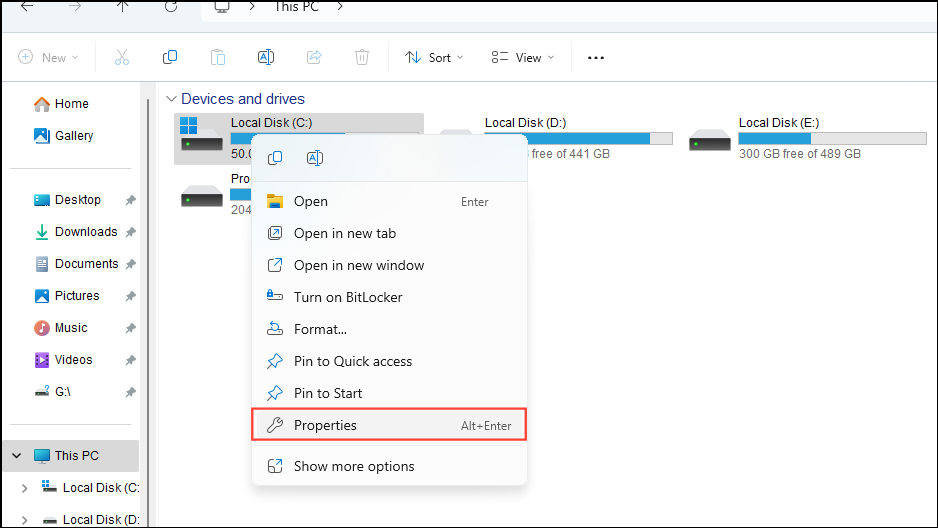
- In the Properties dialog box, click on the 'Tools' tab at the top and then on the 'Check' button.
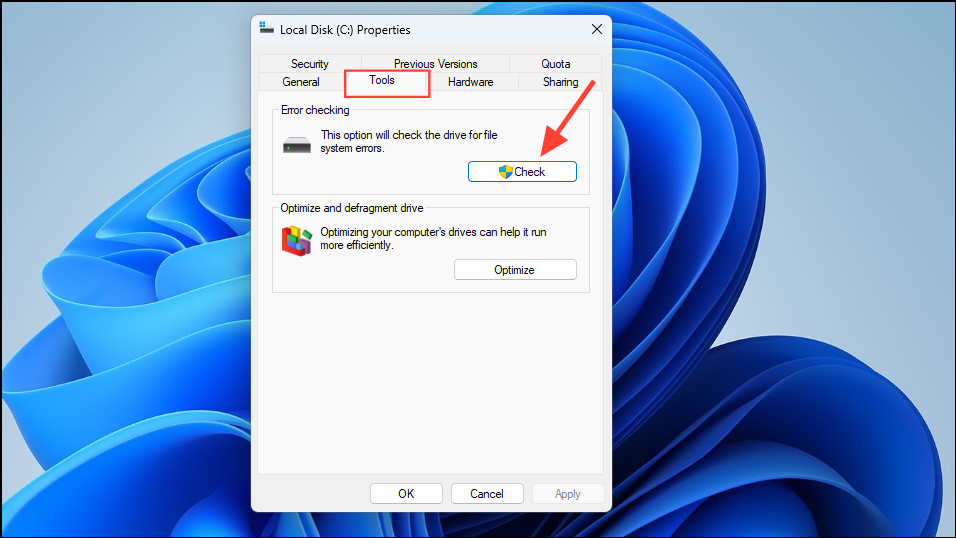
- In the pop-up that appears, click on 'Scan Drive' and wait for the scan to finish.
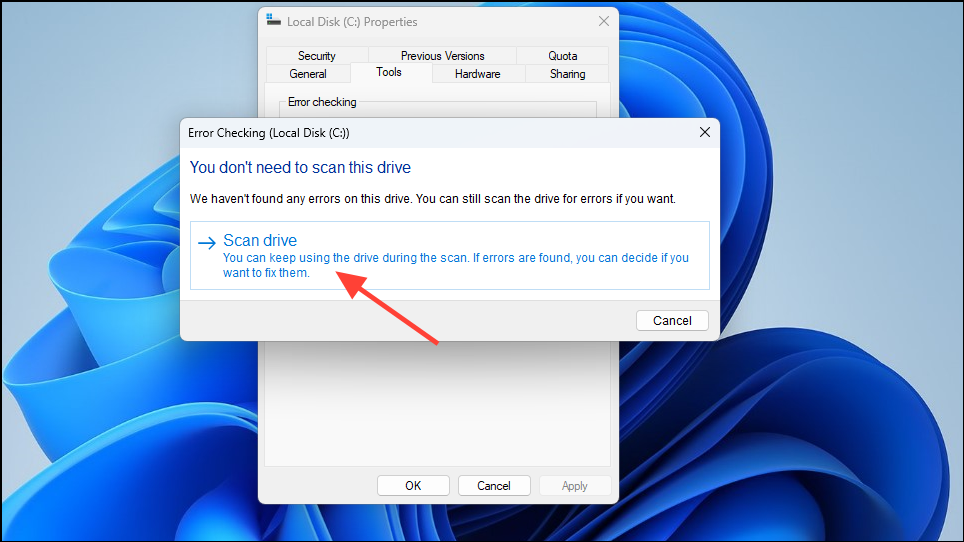
Fix 2: Change BIOS configuration
A faulty BIOS configuration can also result in the 0x80070570 error. To fix it, you will have to enter the BIOS and change the setting.
- Shut down your computer and start it again. While it is booting, press the Function key that lets you enter the BIOS. Depending on the manufacturer and model, it can be the F2, F1, Del, F10, or another key.
- Look for the 'SATA' option, which may be present under the 'Advanced' or similar category. Navigate to it and change to 'AHCI'.
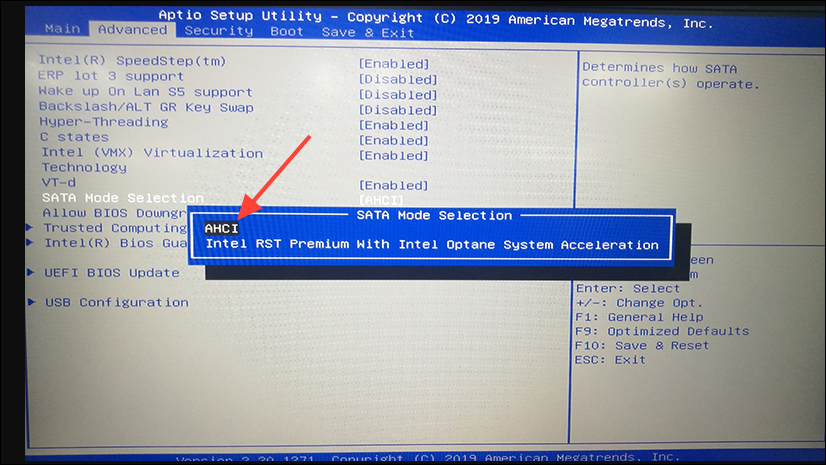
- Save changes, reboot your PC, and try reinstalling Windows.
Fix 3: Redownload the Windows ISO and recreate the bootable drive
Sometimes the installation media or your Windows ISO gets corrupted while being downloaded and can cause problems like the 0x80070570 error. In such cases,
- First, visit Microsoft's website and download the Media Creation Tool for your Windows ISO.
- Run the program as an administrator and click on the 'Accept' button to accept the terms and conditions.
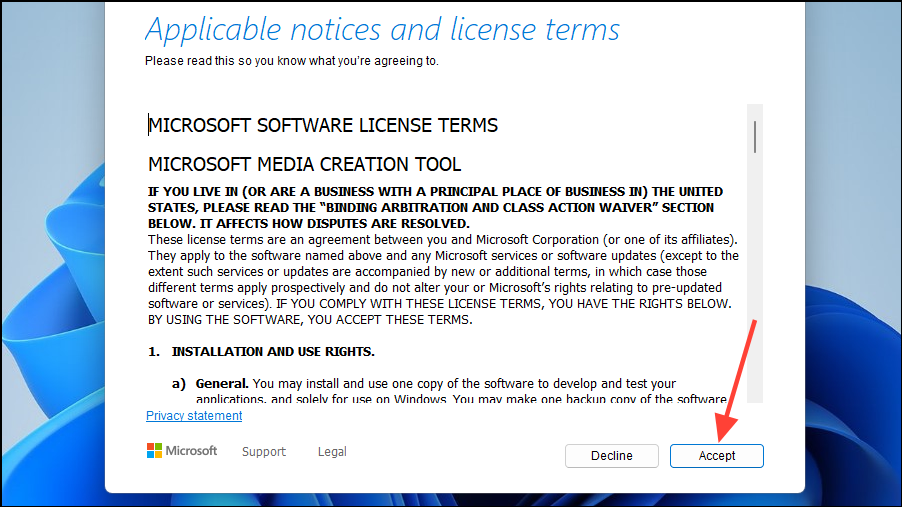
- Select your language and edition and then click on the 'Next' button.
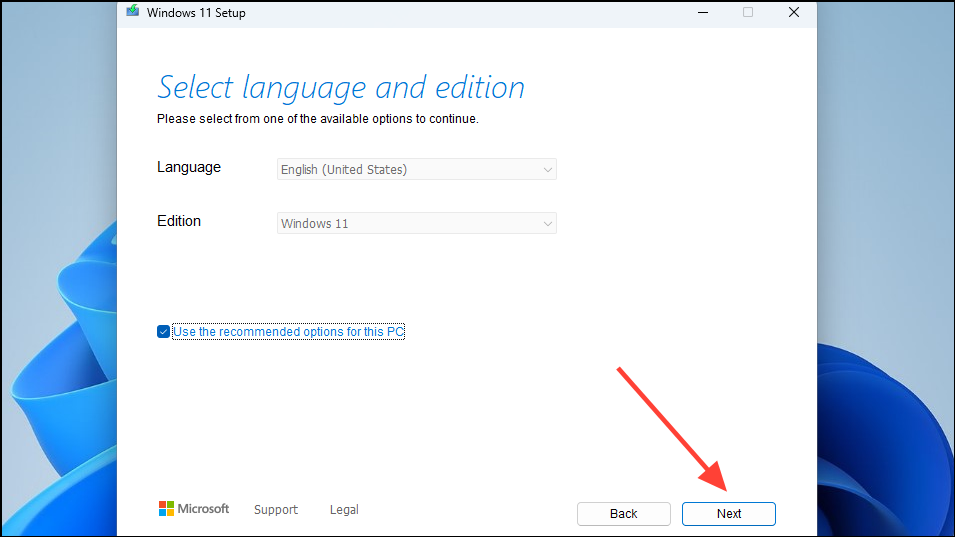
- Next, select your USB or the ISO file and then click on the 'Next' button. Then follow the instructions on the screen to finish creating your installation media.
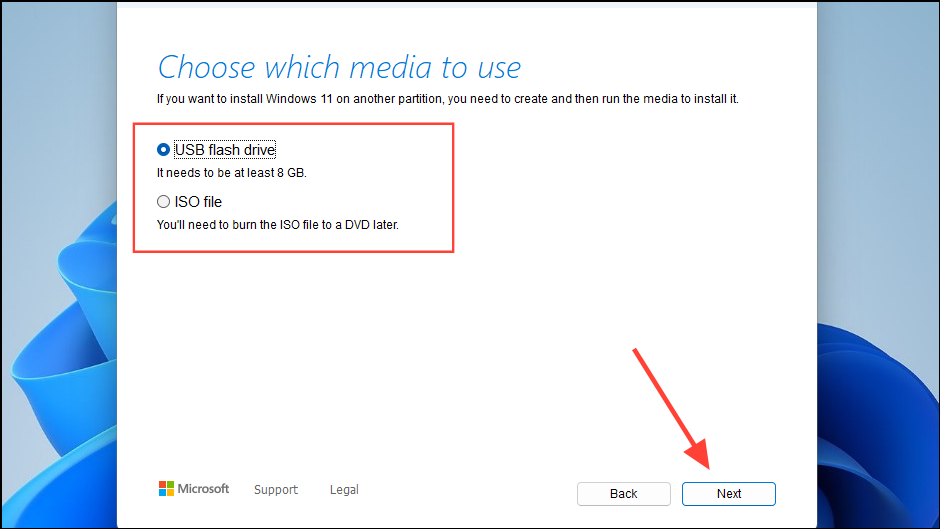
Fix 4: Change the installation directory
You can also change the directory where you are installing Windows and see if that fixes the problem. When you get to the screen where you select a partition for installing the OS, click on a different partition than the one where it was installed earlier. Make sure to click on the 'Format' option to format the partition before clicking on the 'Next' button.
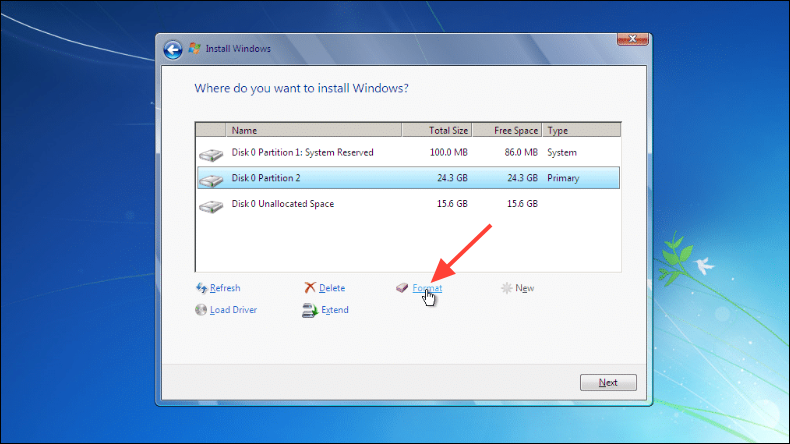
Fix 5: Perform a complete virus scan
If you're getting the 0x80070570 error code with a message that the 'file or directory is corrupted and unreadable', it may be that some malware or virus is present on your system. To fix it, perform a complete virus scan.
- Click on the taskbar overflow button that appears as an arrow on the right side of the taskbar and all hidden services will be visible.
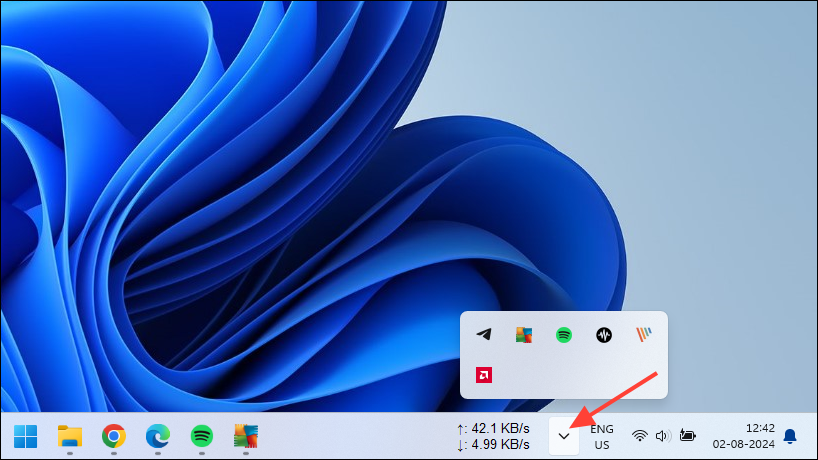
- Your antivirus program will also appear there. Click on it to open it.
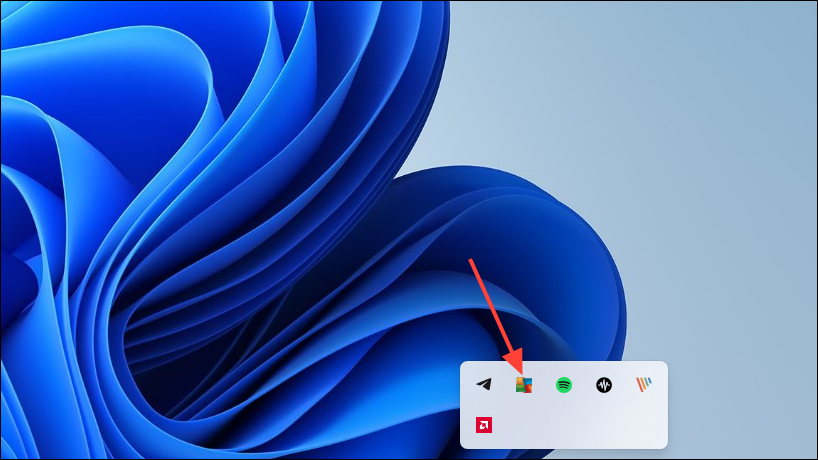
- When your antivirus program is open, look for a scan option and click on it to scan your PC. Make sure to perform a complete scan of your PC. Wait until the scan is finished. If your antivirus detects malware or viruses on your PC, it will delete or quarantine infected files.
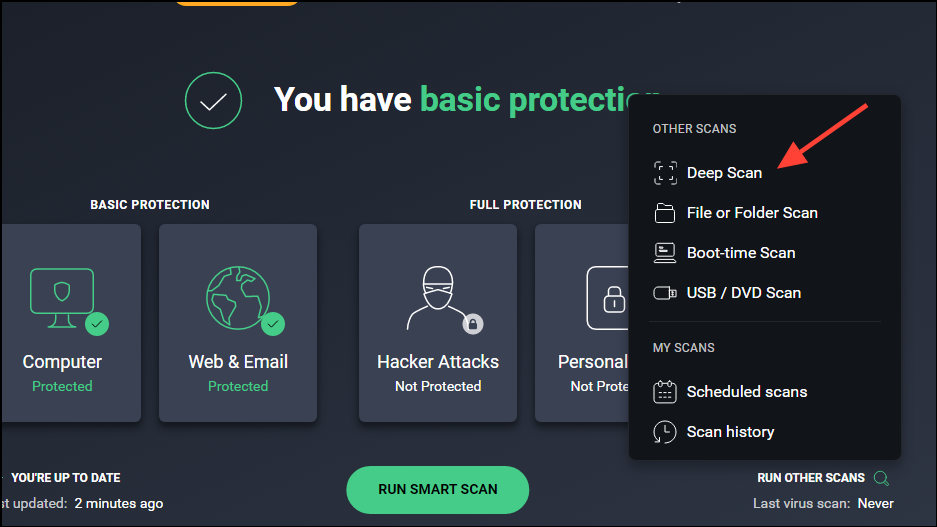
Fix 6: Run Windows Update Troubleshooter
If you're getting the 0x80070570 error code with the message 'Update files are missing or have problems', running the Windows Update Troubleshooter might help you fix the issue.
- Open the Settings app and type
troubleshootin the search box on the left. Then, click on 'Troubleshoot Other problems' in the list of results.
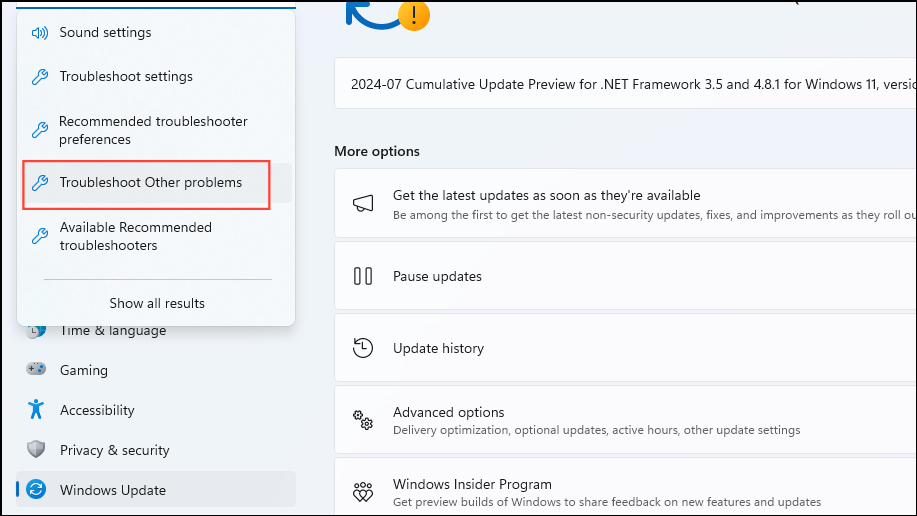
- On the next page, click on the 'Run' button on the right of the 'Windows Update' option.
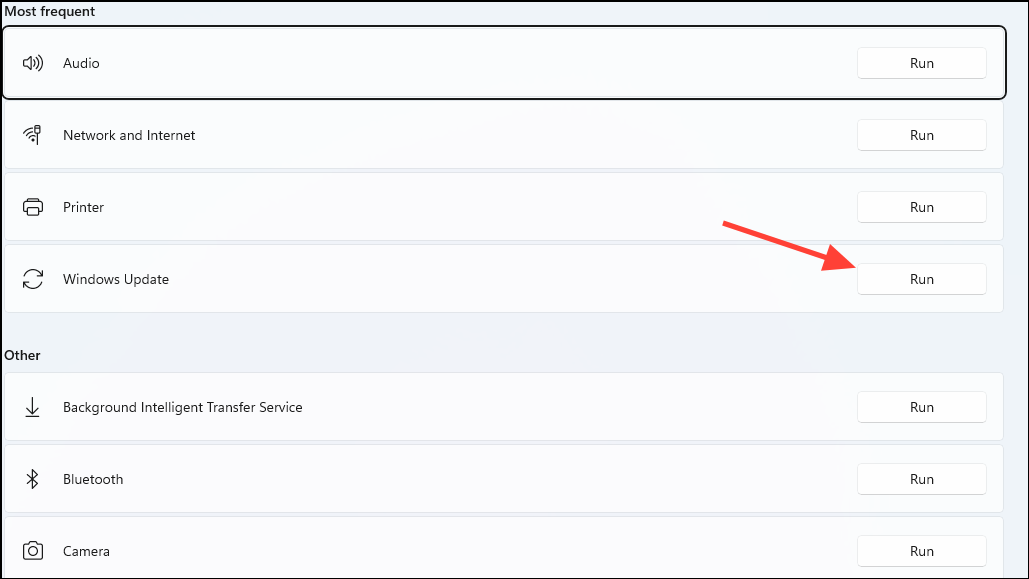
- Wait until the troubleshooter completes scanning for problems. Then click on the 'Next' button and follow the instructions that appear on the screen.
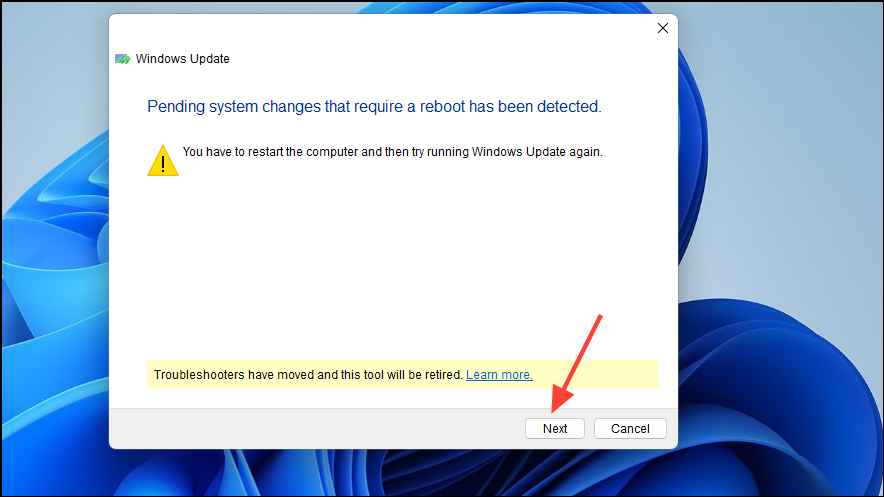
Fix 7: Clear the contents of the Software Distribution folder
- Use the
Win + Rshortcut to open the 'Run' dialog box. Then type `services.msc' and press the 'Enter' key.
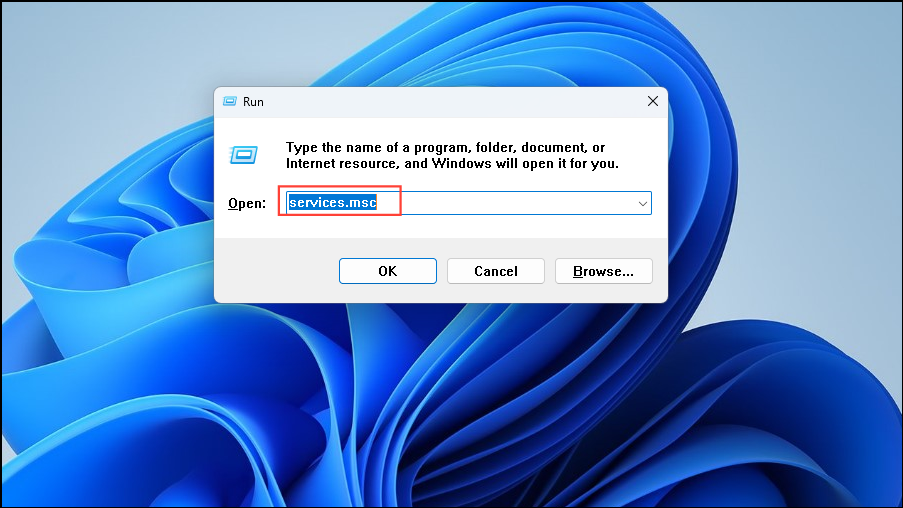
- In the Services utility, locate Windows Update, right-click on it, and click on 'Stop'.
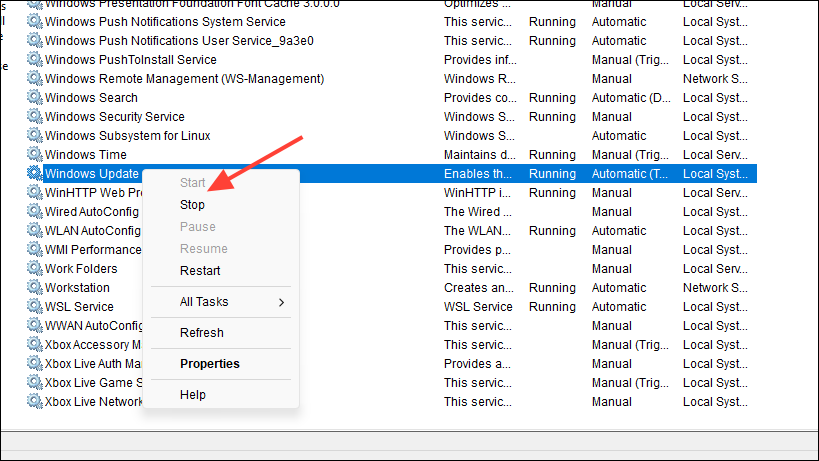
- Then open the File Explorer and go to
C:\Windows\SoftwareDistribution. Here, select all the contents of the folder and delete them.

- After deleting the contents, open the Services utility again and navigate to Windows Update. Right-click on it and click on 'Start'.
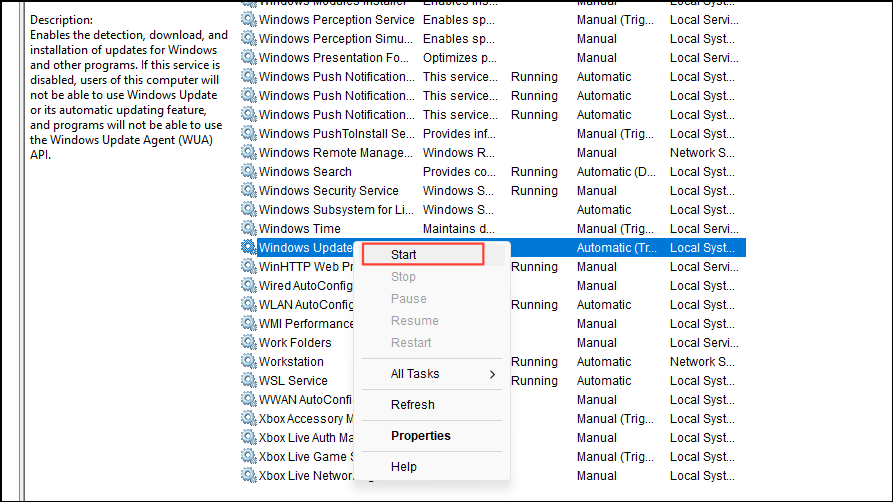
Fix 8: Run DISM and SFC Scans
- Open the Start menu, type
cmd, and click on 'Run as administrator'.
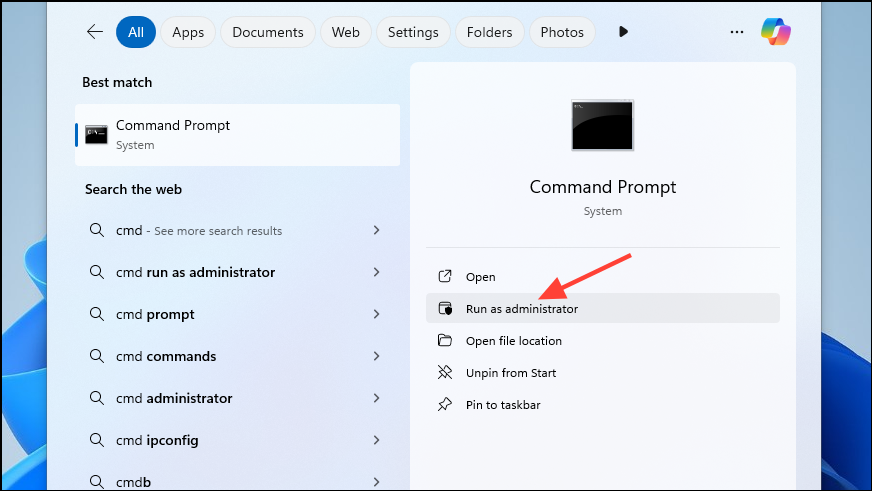
- Type
DISM.exe /Online /Cleanup-Image /Restorehealthin the command prompt window and press 'Enter'.

- Wait until the scan completes and then type
sfc /scannowbefore pressing the 'Enter' key.
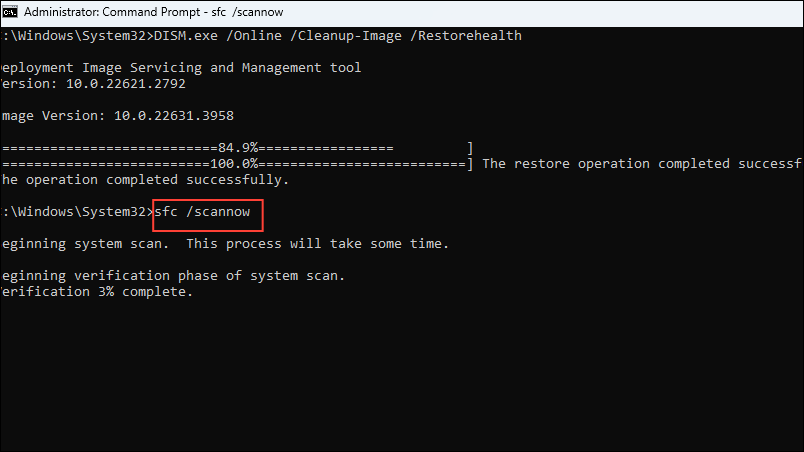
Fix 9: Format hard drive
You can also try to fix the issue by formatting the problematic hard drive.
- Use the shortcut
Win + Xto bring up the shortcuts menu and then click on 'Disk Management'.
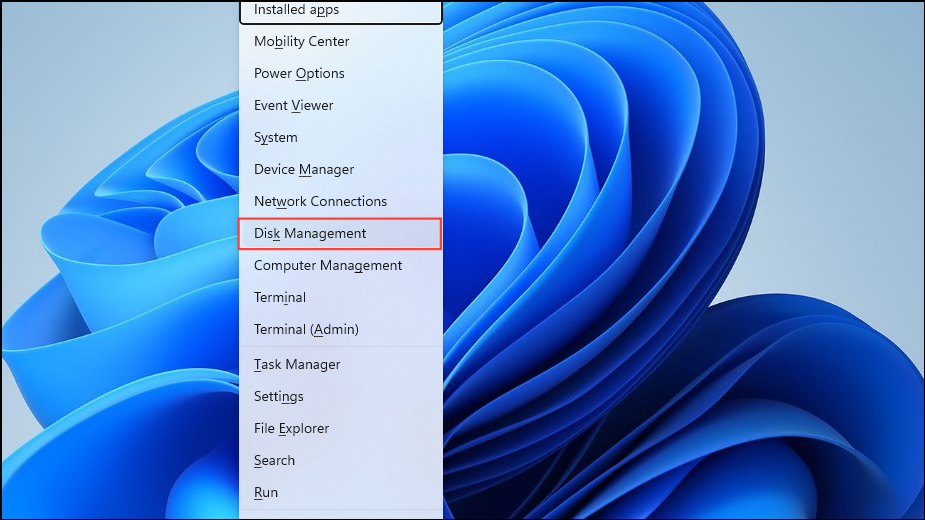
- Right-click on the drive you want to format and then click on 'Format'.

- Alternatively, open File Explorer, right-click on the drive you want to format, and click on 'Format'.
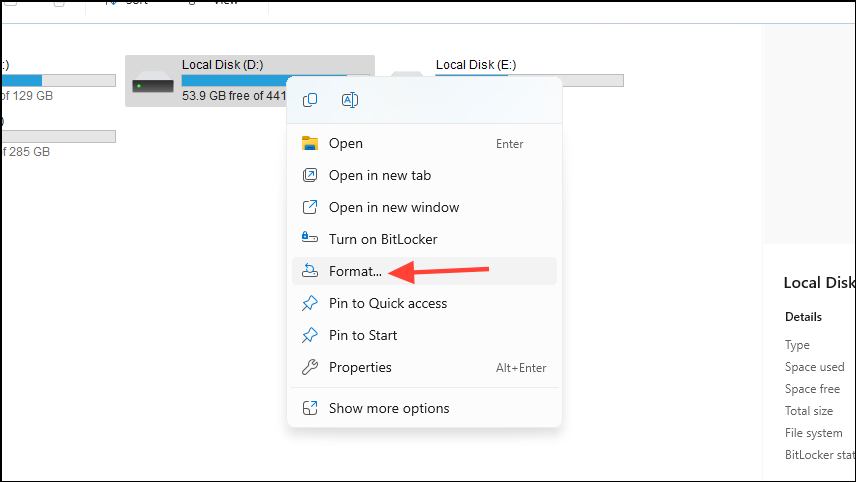
- In the pop-up that appears, click on the 'Quick Format' option to enable it and then click on the 'Format' button.

Fix 10: Update drivers
- Open the Shortcuts menu using the
Win + Xshortcut and click on 'Device Manager'.
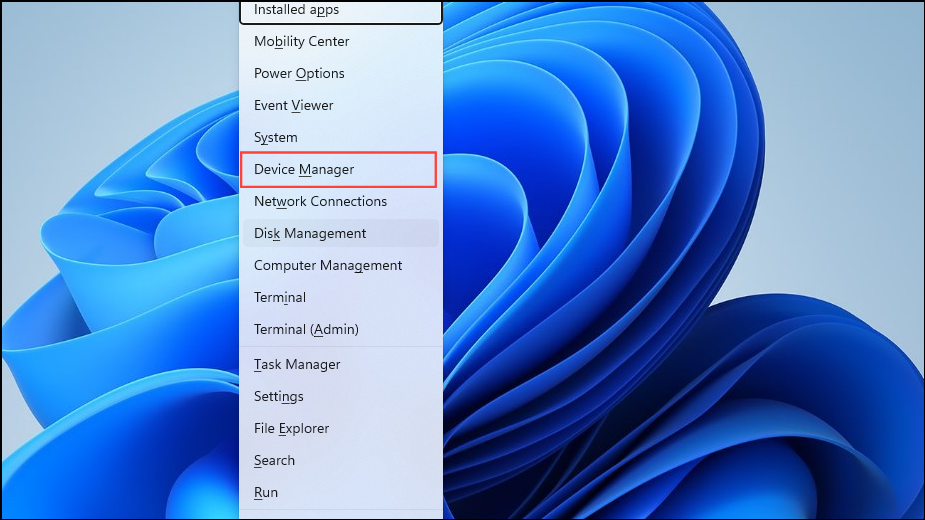
- When the Device Manager opens, click on the arrow next to the device to its driver. Then right-click on it and click on 'Update Driver'.
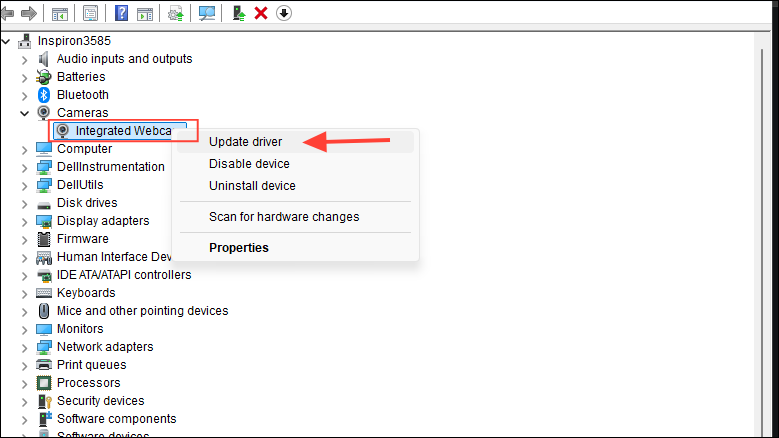
- Click on the 'Search automatically for drivers' option in the dialog box that appears.
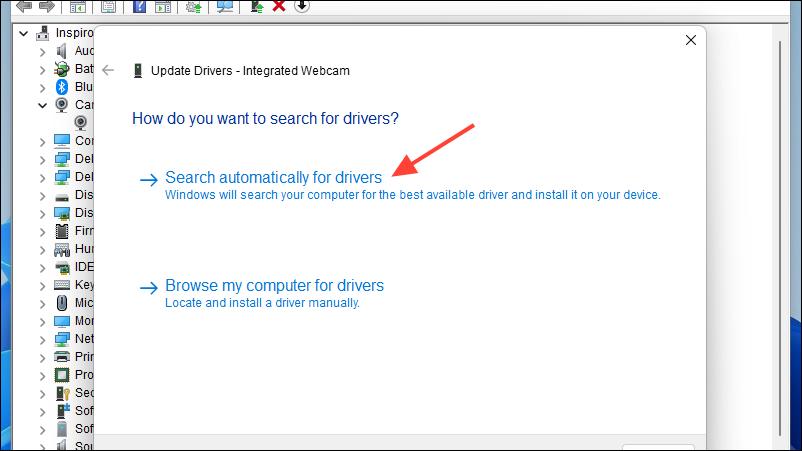
- Wait until the Device Manager searches for new drivers. If they are available, it will install them. You may need to restart your PC once the new drivers are installed.
Fix 11: Defragment Hard Drive
While newer versions of Windows automatically defragment files, you can also do so manually to try and resolve the 0x80070570 error.
- Open the Start menu, type
optimize, and then click on 'Defragment and Optimize Drives'.
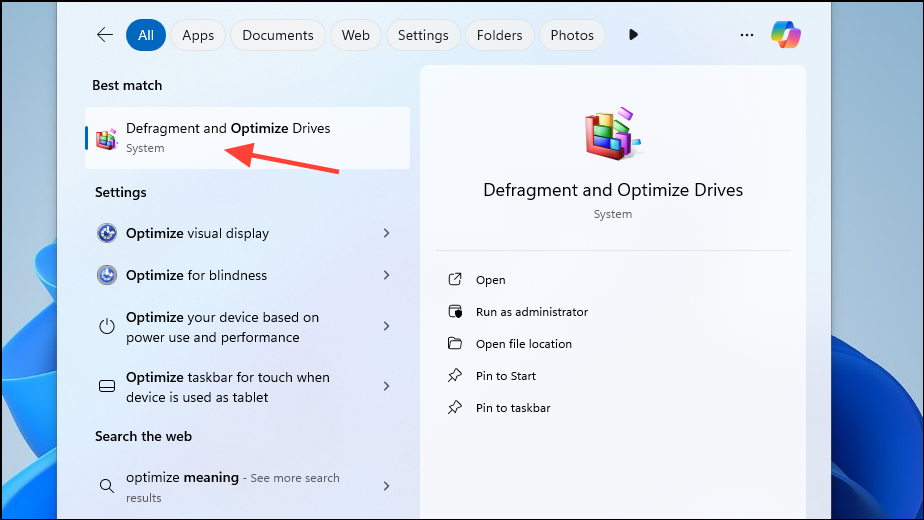
- When the Windows defragmentation and optimization tool opens, click on the drive you want to defragment and then click on the 'Optimize' button.
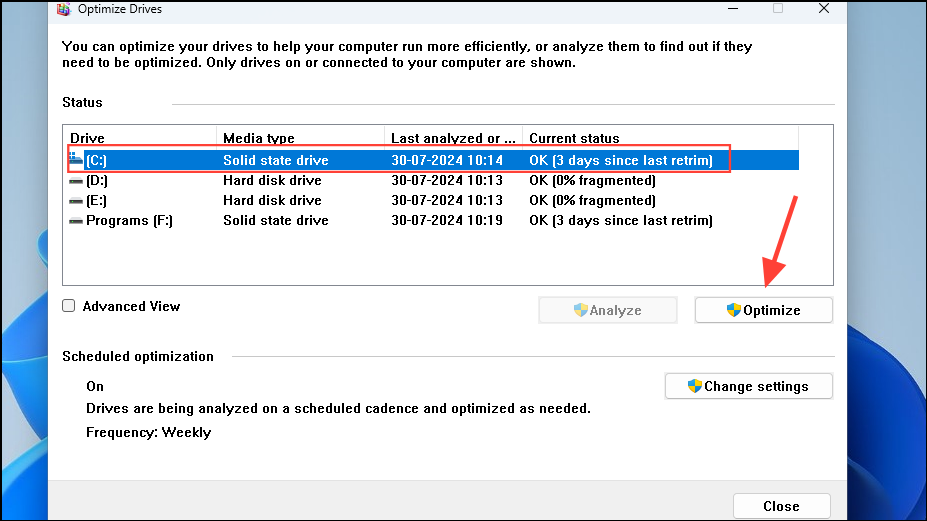
- Wait until the process is complete and then retry what you were doing earlier to check whether the error appears again.
Fix 12: Perform a system restore
With system restore, you can revert your OS to an earlier state when the 0x80070570 error was not present. However, you should have created a restore point earlier for it to work.
- Open the Settings page, type
system restoreand click on 'Recovery'.
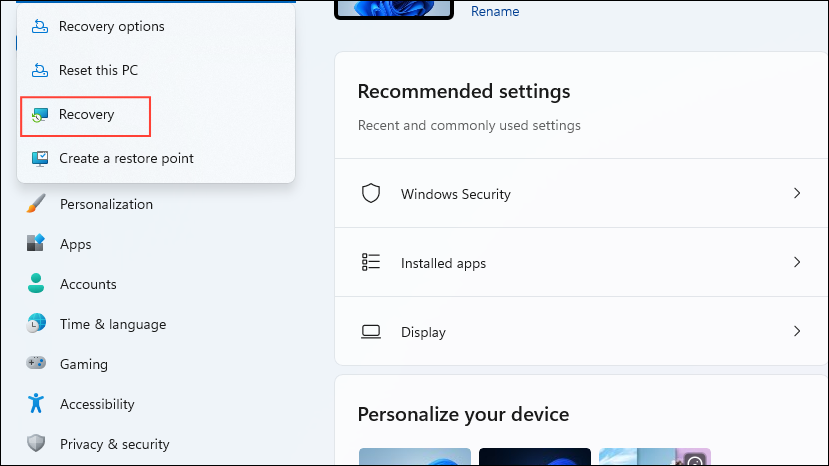
- On the page that opens, click on 'Open System Restore'.

- If you've already created restore points, you will see them here. System Restore will also automatically select the most suitable one. Click on the 'Next' button.

- Then click on the 'Finish' button. Your PC will reboot and go back to its earlier state.
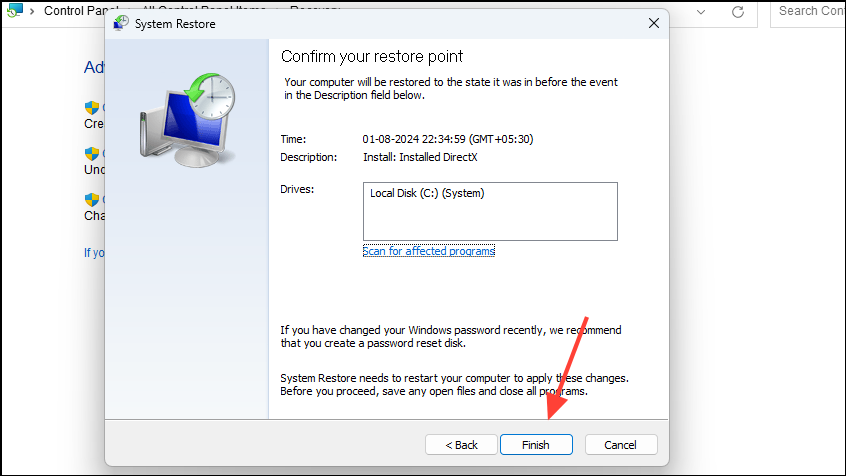
Things to know
- You can also try other small fixes, like checking for Windows Updates, reinstalling the latest updates, removing and replacing the CMOS battery, rebooting your PC, and checking that the RAM is functioning properly.
- If you're getting the error when installing certain programs, you should check the websites for those programs. Their developers may have provided information that can help you know why the problem is occurring, and released fixes for the same.
- Alternatively, if you're running into the error when installing or reinstalling Windows, make sure your machine meets the hardware requirements for the version you want to install.


